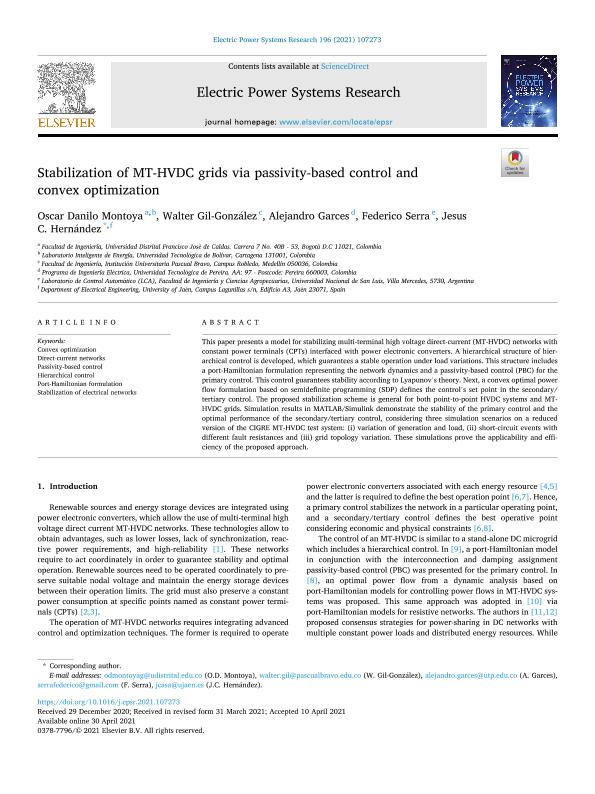Resumen
This paper presents a model for stabilizing multi-terminal high voltage direct-current (MT-HVDC) networks with constant power terminals (CPTs) interfaced with power electronic converters. A hierarchical structure of hierarchical control is developed, which guarantees a stable operation under load variations. This structure includes a port-Hamiltonian formulation representing the network dynamics and a passivity-based control (PBC) for the primary control. This control guarantees stability according to Lyapunov’s theory. Next, a convex optimal power flow formulation based on semidefinite programming (SDP) defines the control’s set point in the secondary/ tertiary control. The proposed stabilization scheme is general for both point-to-point HVDC systems and MTHVDC grids. Simulation results in MATLAB/Simulink demonstrate the stability of the primary control and the optimal performance of the secondary/tertiary control, considering three simulation scenarios on a reduced version of the CIGRE MT-HVDC test system: (i) variation of generation and load, (ii) short-circuit events with different fault resistances and (iii) grid topology variation. These simulations prove the applicability and efficiency of the proposed approach.














